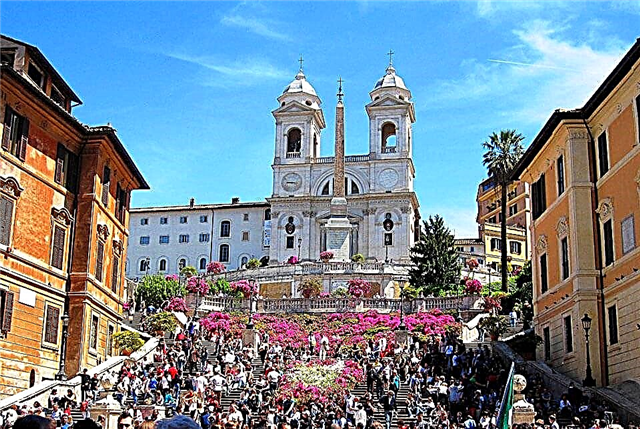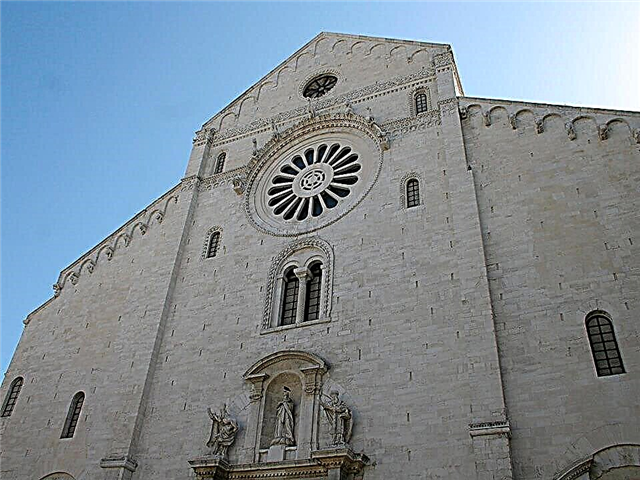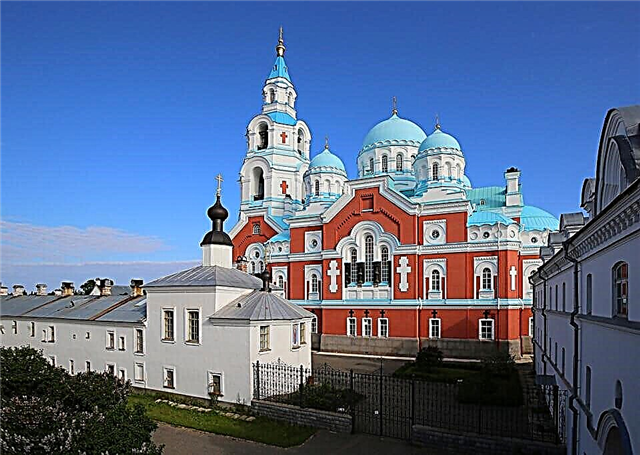Address: Peterhof, Lower Park
Coordinates: 59 ° 53'05.1 "N 29 ° 54'59.1" E (Herringbone), 59 ° 53'04.0 "N 29 ° 55'02.8" E (Waterway), 59 ° 53'06.2 "N 29 ° 55'07.6" E (Umbrella), 59 ° 53'07.2 "N 29 ° 55'02.3" E (Dubok)
Content:
The most favorite among the guests of the Lower Park are amusing fountains-firecrackers. They differ in design and are hidden in different places of Peterhof. If someone comes close to the crackers or touches their separate parts, thin foamy jets of water begin to fly out at tourists. You don't have to look for funny fountains for a long time, because loud laughter is always heard near them.

Water road
The history of the Peterhof jokers
Water sports or extravaganzas were very popular in the courts of Europe. In 1717, the Russian emperor Peter I spent two months at the residence of the French king in Versailles and was extremely impressed by what he saw. In his building under construction near St. Petersburg, he wanted to have similar fountains. Since the tsar had a cheerful disposition and liked to play a trick on his guests, several Peterhof water cannons were made in a special manner in the form of fountains-jokers.
It is interesting that Peter I took an active part in the construction of water sports. He invented some of the firecrackers himself or made adjustments to the drawings and projects prepared by his court architects. Amusing fountains continued to be built by Anna Ioannovna, Catherine II and Alexander I. In former times, such water cannons decorated various imperial residences, however, the fountain fountains survived only in Peterhof.
Almost all water activities are located in the eastern part of the Lower Park, not far from the Orangerie and the Monplaisir Alley. This arrangement of fountains can be easily explained. It was here, in the east of the park, under Peter the Great and other tsars that there were "playgrounds" and a swimming pool where the tsar's guests liked to spend their time. Everyone loved the Waterway Bridge at the Ruin Cascade and the Splash Table at the Grand Cascade grotto.
During the Great Patriotic War, the nearest suburbs of St. Petersburg for a long time were in the power of the Nazis. During the occupation, almost all the fountains of Peterhof were destroyed, and therefore in the post-war years they had to be restored almost from ruins. For this, the restorers used old photographs, drawings and drawings. The Dubok fountain, for example, was restored one by one small metal branch with leaves.

Umbrella
Today in the Lower Park you can see several fire fountains. Some of them are quite harmless, while others leave no chance for visitors to stay dry and therefore are especially loved by guests of the park.
Oak
In 1735, the famous caster Bartolomeo Carlo Rastrelli made a lead tree with gilded leaves to decorate one of the circular pools in the Upper Garden. The metal oak stood there until the middle of the 18th century. In 1802 it was restored and placed in the Lower Park. On one of the green bosquets, adjacent to the picturesque Monplaisir Alley from the west, a new water cracker was built. To make the “Dubok” not stand out too much among the lush greenery of the park, its trunk and leaves were painted to look like a natural tree.
The fountain stood in the Lower Park until the beginning of the First World War. Then it was dismantled and stored in the pantry. In 1924, under the direction of the architect V. Voloshinov, the old fountain was rebuilt.
The hollow trunk rises to a height of 6 m. The folds cast from lead are very reminiscent of real tree bark, and the "oak" leaves are made of sheet copper. Inside, the "Dubok" is completely filled with water, and water jets burst out of 500 thin branches of a tree. Five graceful tulips "grow" around them, which are also small water cannons. The water gushes straight from the brightly colored flowers.

Christmas trees
Nearby there are two wooden benches with built-in pipes for water. Anyone who wants to sit down and admire the action of the fountain from the side is immediately wet with water jets erupting from the benches. Tourists who want to enjoy water fun should keep in mind that water is served in Dubok from 10.00 to 19.00.
Sofas
In the southern part of the Monplaisir garden you can see the original fountain-cracker "Divanchiki". It is notable for the fact that it was built one of the first in Peterhof. The fountain was designed by the court architect Nicola Michetti, and its drawings were corrected by Peter I. The first time water fun was tested in 1723.
Outwardly, the old water cannon looks like two snow-white sofas, which, according to the trellis fashion of the early 18th century, have latticed seats and backs. Due to its resemblance to park furniture, the fountain is often called "Benches". The backs of the sofas are decorated with gilded mascarons of newts, and in front of them is a rectangular tuff platform. If tourists try to get closer to the cracker, mischievous streams begin to beat from the mascarons and the playground, and no one has a chance to stay dry.
Children are especially zealous fans of Divanchik. On a hot day, kids are sure to frolic on a tuff area in streams shimmering in the sun. For children, playing in the fountain turns into a real adventure, since no one knows which stone to step on for the fountain to turn on. In the summertime, water is served to the cracker from 10.00 to 19.00.

Oak
Water road
Near the "Divanchiki" above the Monplaisir Alley, one can see the arch of the "Waterway". An intricate water cannon of three hundred water jets was built in 1721 and received the name of the "Soaking Road" from the visitors of the park. He did not stand for long. The "wet road" was quickly removed, considering the water fun to be too rough. This was not surprising, because the ladies walking along the alley were dressed in luxurious silk dresses, and their gentlemen wore expensive camisoles. When the guests found themselves near the arch, they quickly lost their gloss, and their expensive wigs - a presentable look.
In 2001, using the surviving drawings and descriptions, they managed to restore the old cracker. Previously, the water in the fountain gushed unexpectedly, taking guests by surprise. Nowadays, the order has been changed. Water is allowed in the arch for a short time at 13.00, 14.00 and 15.00, so those who want to see the fountain in action come to it in advance.
Umbrella
Not all the wetting fun that Peterhof's founder, Peter I, dreamed of, was realized during his lifetime. The "Umbrella" cracker, designed by the emperor, was only built at the end of the 18th century. The author of the project of this fountain was the architect F. P. Bower, who skillfully applied the motives of the Chinese buildings from Tsarskoye Selo in the new water cannon.
The fountain is shaped like a large umbrella. A wide white leg supports the bright green spreading roof. The cracker stands on a tuff dais and has several wooden armchairs with armrests. As soon as visitors enter under the roof and sit down to rest, vertical streams of water begin to beat along the laced edge. They rush to the ground from thin metal tubes and form a dense flowing curtain around the water cannon. It seems to visitors that there is a real downpour behind the fountain, and it is impossible to get out from under the roof without getting wet.

Small sofa
The Umbrella Fountain has been redesigned many times. Initially, it was equipped with 134 tubes, and in the second half of the 19th century the number of tubes was reduced to 80. For a long time, the "wetting fun" was called "Mushroom", because in the 1860s, the wide roof began to be painted like an amanita mushroom. In 1949, when the fountain was being restored, the architect A. A. Olya and the master carver G. S. Simonov decided to give it its original appearance. You can see the cracker in action from 10.00 to 19.00.
Christmas trees
Not far from the Greenhouse building, on a green curtain, there are three small fountains, which are very similar to natural spruces. This cracker was made in 1784 by the architect I. Kreiser and the master hydraulic engineer F. Strelnikov. From a distance, thin branches and wire needles are easy to mistake for ordinary trees, but if tourists who did not see the trick come closer, they turn out to be wet due to thin water jets and splashes.
During the war, the ancient fountain was completely destroyed, so it was only restored in 1958. As in most of the Peterhof jokers, the water in "Yolochki" is turned on from 10.00 to 19.00.











